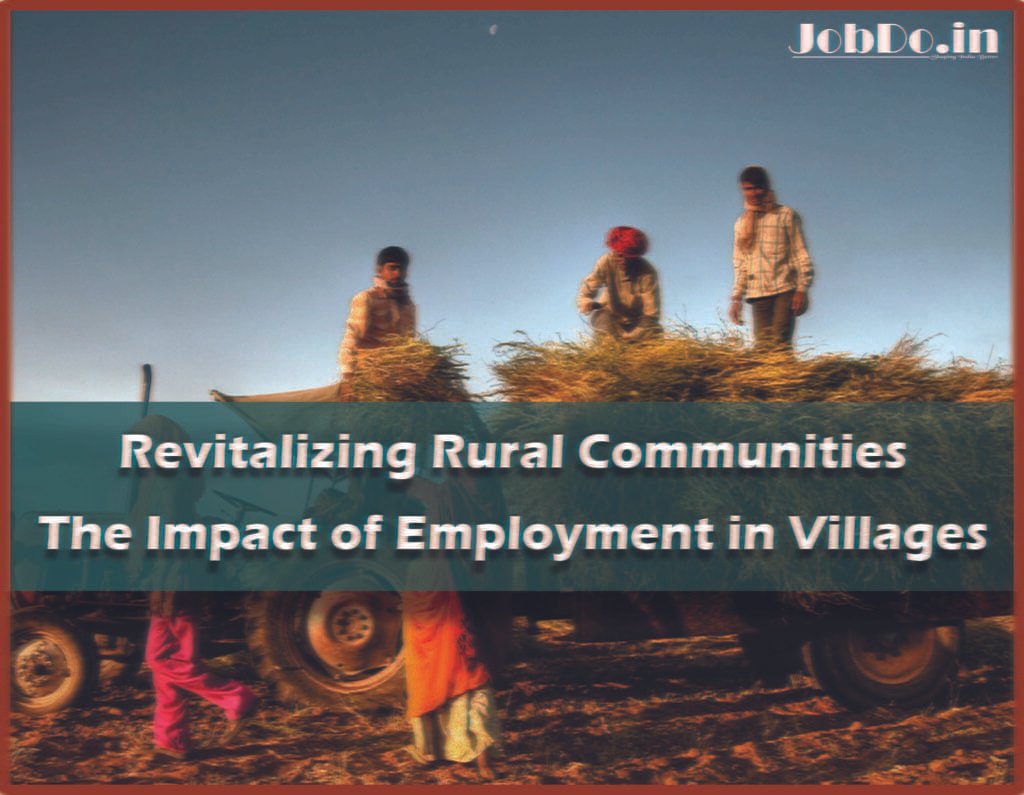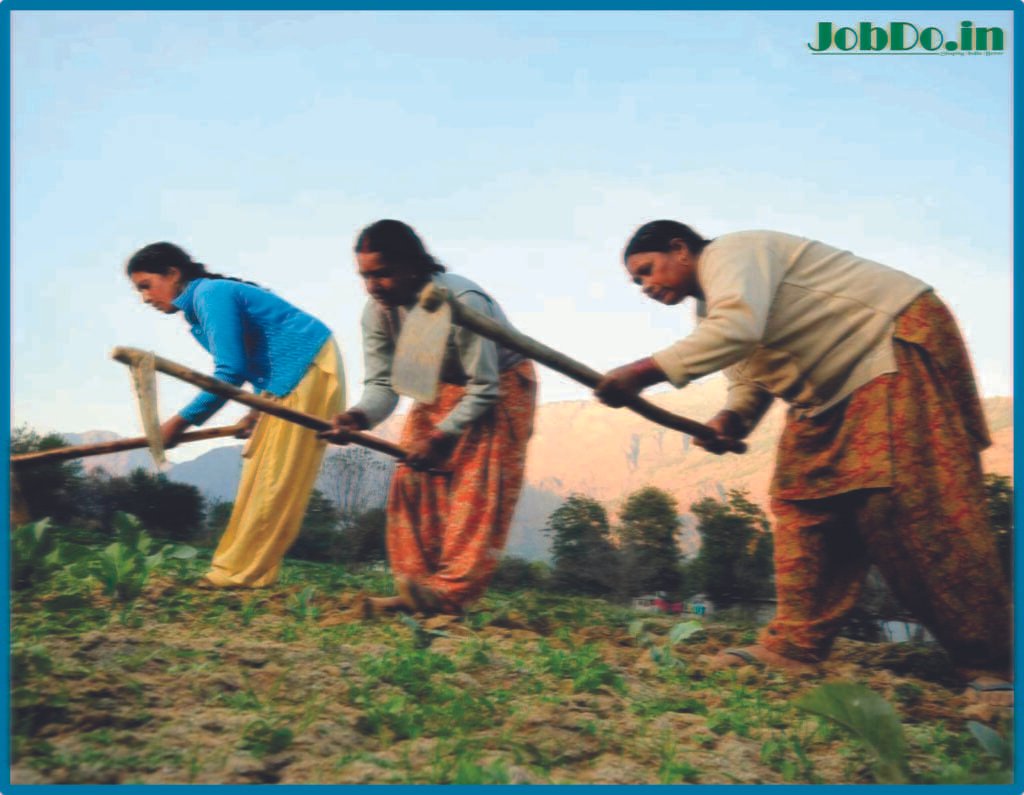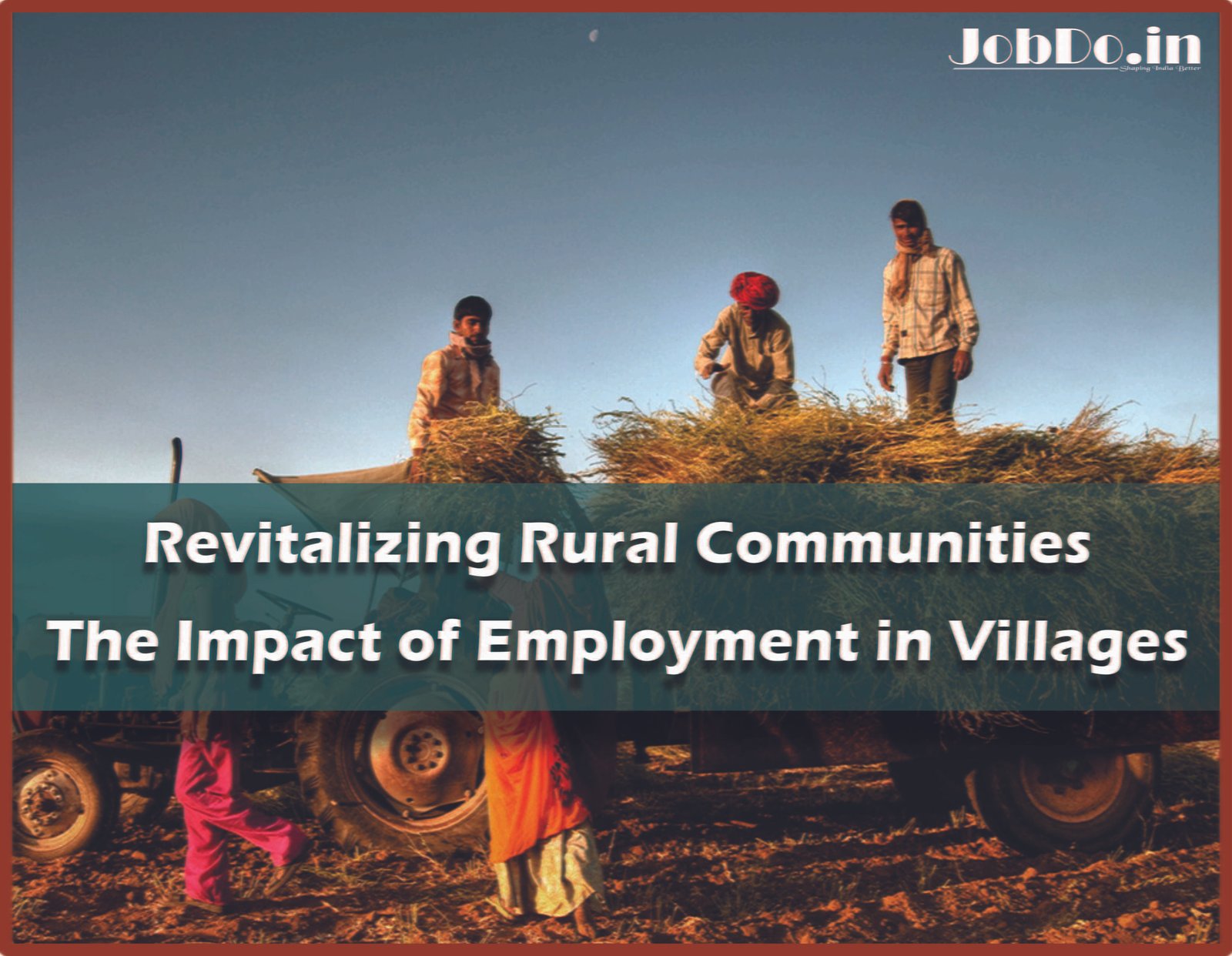Revitalizing Rural Communities: The Impact of Employment in Villages
Revitalizing Rural Communities: The Impact of Employment in Villages
Rural communities have long been regarded as the backbone of any country’s economy, providing resources to sustain urban areas and fueling industries around the world. However, in recent years, these regions have been experiencing a decline in population due to various reasons such as urbanization, lack of employment opportunities, and lack of infrastructure. Revitalizing Rural Communities
With the changing times and modernization taking over, many rural communities have found it challenging to adapt to the changing environment, especially when it comes to employment. Villages across the world are struggling to retain their population, as citizens move to urban areas in search of better opportunities. This has resulted in the decline of commerce, lack of facilities and basic amenities and ultimately stagnation.

Revitalizing rural communities has become a vital concern for governments and local authorities worldwide. Employment, in particular, has a significant impact on the economy of rural communities, affecting everything from local businesses to public services. Revitalizing Rural Communities
Employment is crucial for revitalizing rural communities as it infuses new life into stagnant regions, providing opportunities for growth and development. Employment opportunities in villages can be created by both public and private sectors. The government can provide incentives for industries to set up operations in rural areas, while private sector companies can tap into the local talent pool and use it for their benefit. Revitalizing Rural Communities

Employment initiatives in rural communities can have a wide range of positive impacts that can ripple throughout the community. For example, the presence of industry in rural areas leads to increased demand for local services such as restaurants, grocery stores, schools, and healthcare facilities. These new businesses result in more revenue and employment opportunities, which can eventually lead to more infrastructure and amenities in rural areas.
Additionally, employment in rural areas can help reduce the poverty and social inequality gap. Many people in rural areas depend on agriculture and traditional occupations for their livelihood, which are often seasonal and uncertain. Creating stable employment opportunities allows for a consistent income, reducing financial instability and improving the quality of life for residents.

Employment initiatives in rural communities can also help bridge the gap between urban and rural areas. With more job opportunities available in villages, the exodus of people to urban areas may slow down, and people may choose to live and work in rural areas instead. This could contribute to a more balanced distribution of population, resources, and opportunities between urban and rural communities.
In conclusion, employment is a critical factor in revitalizing rural communities, as it can have a far-reaching impact on everything from commerce to quality of life. Governments and private sector companies must work together to promote and support employment initiatives in rural areas, which in turn will lead to increased infrastructure, enhanced quality of life, and a healthier economy in rural communities. By renewing vitality and creating a sustainable ecosystem, rural communities can be kept vibrant and viable for future generations.
Check Also Job:-Data Entry Job
Important Link
Assist Website:- www.easytarika.com
Employment News.gov.in Releases Latest Job Opportunities
Top 10 Part Time Work from Home Jobs
Unlocking the Potential of Work-From-Home Opportunities
Job Related Post
Immediate Need Salespeople for Showroom
Immediate Need Billing Operator





